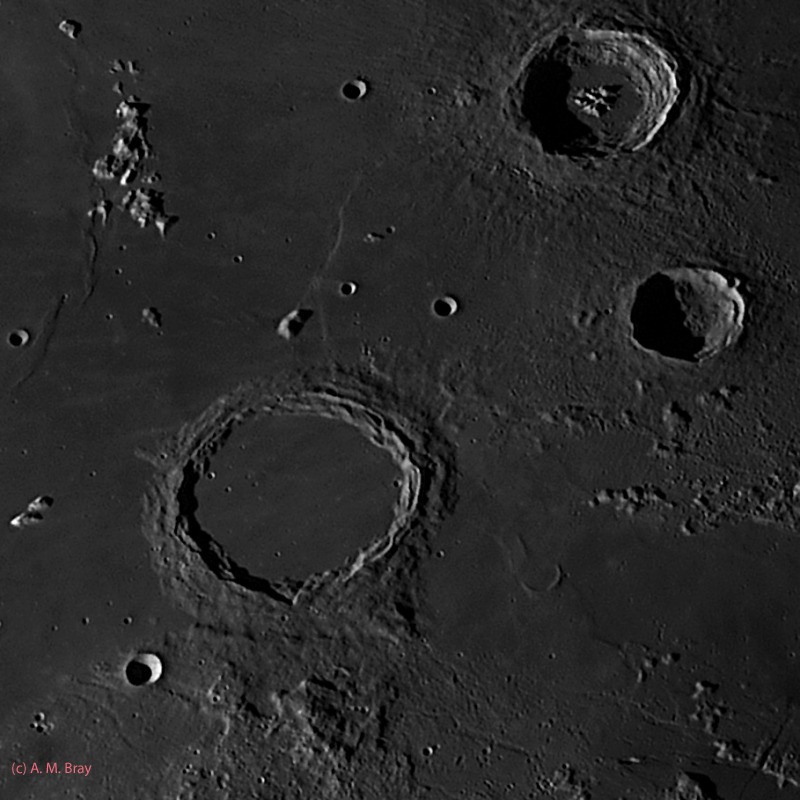Archimedes, Aristillus and Autolycus.

VTM H4 | Rukl-12 Rukl-22
This wide field image captured with the DMK 4 takes in the Eastern side of Mare Imbrium. Flooded crater Archimedes (83 km) is the dominant feature and the largest crater within Mare Imbrium. It has a depth of 2.1 km and the two largest internal craterlets, T to the left and S to the right, are both 3 km in diameter. The mountain range Montes Spitzbergen lies to the North of Archimedes, together with several scattered isolated mountains. Autolycus (39 km) lies to the East (right) in part shadow; it is a deeper crater with a depth of 3.4 km. Luna 2, the first probe to reach the Moon in 1959, landed (crashed) between Archimedes and Autolycus. Imagine a line between the crater centres and 2/3 the way from the larger crater wall to the smaller crater wall. - there it is! Aristillus (55 km) sits in the top RH corner. This crater has beautiful terraced walls and a complex group of central peaks rising up to 0.9 km above the crater floor. It is a deep crater at 3.4 km. Aristillus, which is a relatively young crater, is the centre of a ray system that is apparent at Full Moon. The basalt plain between these three craters is called Sinus Lunicus, though it is simply part of the same basaltic plain as the surrounding Mare Imbrium. A crescent-shaped flooded crater remanent, Spurr (13 km) can be seen approx. 40 km South East of Archimedes. As is common on all mares, a number of wrinkle ridges can be seen, here running North-South.
Waning Moon, 52% full
This wide field image captured with the DMK 4 takes in the Eastern side of Mare Imbrium. Flooded crater Archimedes (83 km) is the dominant feature and the largest crater within Mare Imbrium. It has a depth of 2.1 km and the two largest internal craterlets, T to the left and S to the right, are both 3 km in diameter. The mountain range Montes Spitzbergen lies to the North of Archimedes, together with several scattered isolated mountains. Autolycus (39 km) lies to the East (right) in part shadow; it is a deeper crater with a depth of 3.4 km. Luna 2, the first probe to reach the Moon in 1959, landed (crashed) between Archimedes and Autolycus. Imagine a line between the crater centres and 2/3 the way from the larger crater wall to the smaller crater wall. - there it is! Aristillus (55 km) sits in the top RH corner. This crater has beautiful terraced walls and a complex group of central peaks rising up to 0.9 km above the crater floor. It is a deep crater at 3.4 km. Aristillus, which is a relatively young crater, is the centre of a ray system that is apparent at Full Moon. The basalt plain between these three craters is called Sinus Lunicus, though it is simply part of the same basaltic plain as the surrounding Mare Imbrium. A crescent-shaped flooded crater remanent, Spurr (13 km) can be seen approx. 40 km South East of Archimedes. As is common on all mares, a number of wrinkle ridges can be seen, here running North-South.
Waning Moon, 52% full

|
